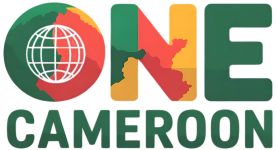Cameroon’s diverse elevation and equatorial climate provide ideal conditions for coffee cultivation. Although overshadowed historically by its neighbor, Côte d’Ivoire, Cameroon has steadily carved a reputation for high-quality Arabica and Robusta beans—especially those grown in the Western Highlands around Dschang, Bafoussam, and Foumban. As both local consumption and specialty coffee exports rise, a burgeoning coffee culture is taking root: artisan roasters, specialty cafés, and coffee festivals are elevating Cameroon’s beans onto global stages.
Coffee farming in Cameroon dates back to the 19th century, introduced by German colonialists in regions like Mount Cameroon. Today, smallholder cooperatives dominate production. Farms perched between 1,200 m and 1,800 m above sea level yield Arabica varieties prized for their bright acidity and floral aromas. Robusta thrives at lower elevations around 800 m, its hardiness suited to warmer, humid zones. In Bafang, plantation owners have reintroduced shade-grown systems: coffee trees interplanted with banana or avocado, reducing erosion and fostering biodiversity.
At harvest season—typically October to December for Arabica and March to May for Robusta—farmers hand-pick ripe cherries, ensuring uniformity. These cherries are sorted, de-pulped, and either sun-dried on raised African beds or wet-processed in depulping machines. Cooperative-managed wet mills, such as those in Dschang Coffee Union, provide technical support: water channels, fermentation tanks, and quality control laboratories. Once parchment coffee dries to ~12% moisture content, it’s hulled and graded by bean size. Top-grade beans fetch premiums in European and Asian specialty coffee markets.
In urban areas like Douala and Yaoundé, third-wave coffee shops celebrate these local beans. Cafés such as Artcaffé (Yaoundé) and Antidote Café (Douala) feature manual brewing methods—pour-over V60, Chemex, Aeropress—highlighting flavor profiles unique to Cameroon: tasting notes range from blackberry and citrus to caramel and dark chocolate. Baristas attend workshops on latte art, cupping techniques, and roast profiles. At the annual Douala Coffee Festival, roasters compete in “Barista Battles,” judged on espresso extraction, milk foam texture, and creative signature beverages.
Coffee tourism is gaining traction in the Western Highlands. Tour packages guide visitors through coffee estates around Dschang: tourists pick cherries alongside farmers, learn about fermentation durations, and participate in roasting demonstrations over open flames. At Dschang’s weekly market, vendors sell freshly roasted beans packaged in burlap sacks, stamped with farm logos or cooperative emblems. Small guesthouses offer “coffee farm stays,” where travelers wake to the scent of roasting beans and dine on coffee-themed breakfasts—banana pancakes drizzled with espresso-infused syrup.
Local entrepreneurs have launched micro-roasteries such as Café Matadou in Bamenda. Equipped with small-batch roasting machines, they roast beans to medium-dark profiles, aiming to preserve origin characteristics. Cafés serve seasonal single-origin coffees from Santa (West Region) or Foumbot (West). Direct-trade relationships between roasters and farmers ensure fair pricing—micro-lots selling at premiums that benefit both parties. Some cooperatives partner with Fairtrade and Rainforest Alliance certifications, gaining access to European markets that demand ethically sourced beans.
Instant coffee remains popular for convenience, especially in rural areas. Producers such as Nestlé Cameroon source local Robusta for instant blends, marketing them as affordable options. However, awareness of specialty coffee is growing: supermarkets stock light-roast beans from Dschang, packaged in resealable bags. Home brew kits—hand grinders, stainless-steel filters—are sold online and in urban boutiques, encouraging experimentation beyond traditional Nescafé-induced coffee habits.
Cameroonian coffee’s export profile is expanding. The Coffee Board of Cameroon coordinates quality improvement programs, sending agronomists to train farmers in pruning techniques, shade management, and disease control (particularly to combat coffee leaf rust). Research collaborations with CIRAD (French Agricultural Research Centre for International Development) examine grafted hybrids resistant to Fusarium wilt. As yields stabilize and quality improves, Cameroon’s coffee appears on menus at specialty shops in London, Tokyo, and Seattle—where discerning consumers seek unique African beans beyond Ethiopian or Kenyan varietals.
Cameroon’s coffee culture extends beyond beans: coffee-infused chocolates, ice creams, and craft cocktails incorporate local brews. Artisanal chocolate makers use cocoa beans from the South paired with coffee grounds, creating truffles that capture the essence of Cameroon’s terroir. Mixologists craft drinks like “Yaoundé Espresso Martini”—vodka blended with local espresso and bitters—now a signature in Douala’s rooftop bars.
From remote highland farms to urban cafés, Cameroon’s coffee journey is a story of resilience and innovation. By linking farmers to roasters, promoting sustainable practices, and educating consumers, the nation is carving a niche in the global specialty coffee landscape. As you sip a freshly brewed Cameroonian pour-over, you’re drinking more than coffee—you’re tasting the dedication of generations who transformed fertile hillsides into aromatic legacies.









